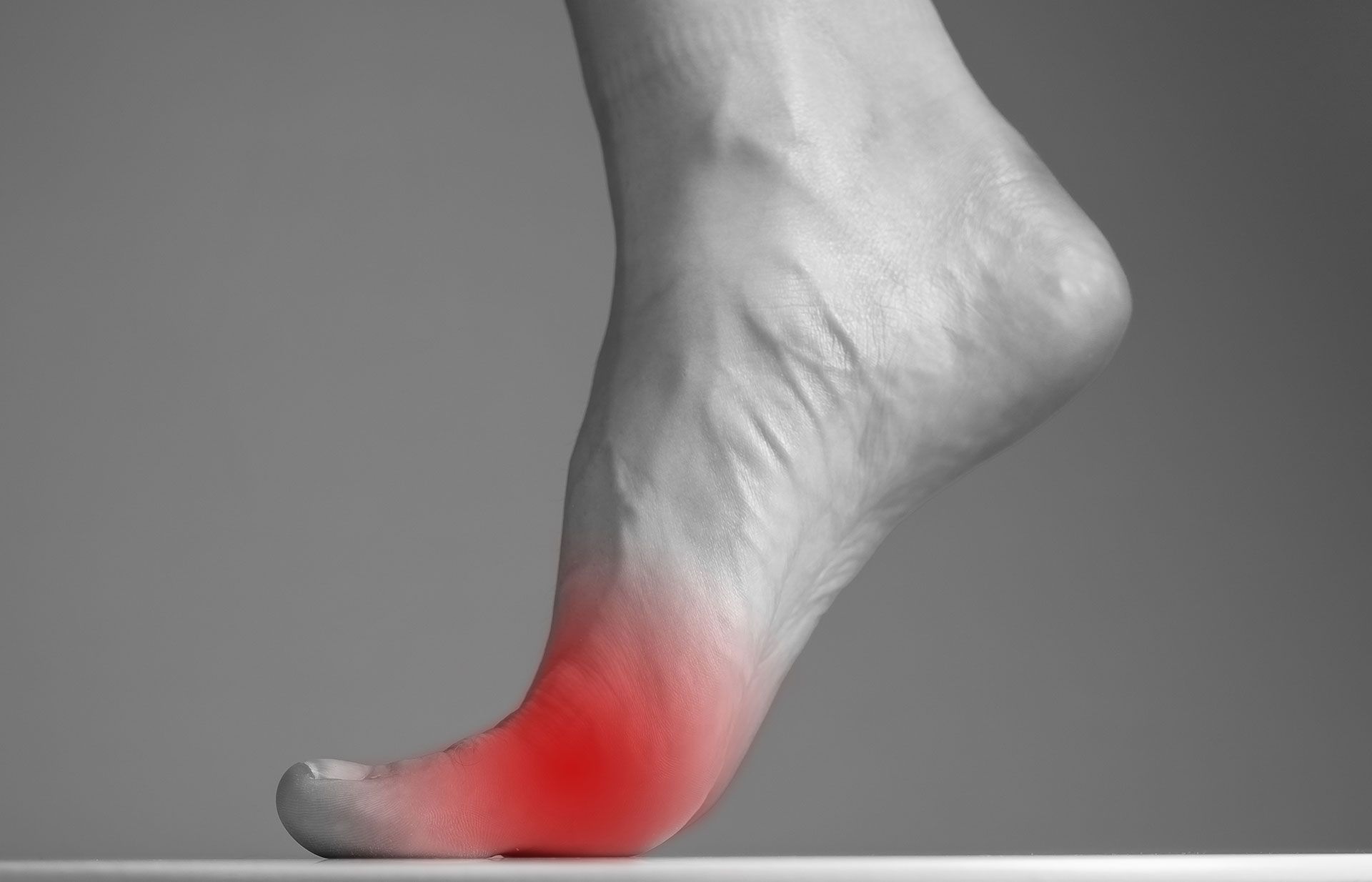Neuromas

Specialized Neuroma Treatment
Expert Care for Morton's Neuroma and Nerve Pain Relief
Neuromas are painful conditions that occur when the tissue surrounding a nerve in the foot becomes thickened or irritated, leading to nerve compression and inflammation. This irritation disrupts normal nerve function and often results in sharp, burning pain, tingling, or numbness in the affected area. The most common type, known as Morton’s neuroma, develops between the third and fourth toes and frequently causes discomfort in the ball of the foot. Patients often describe the sensation as if they are standing on a small pebble or have something bunched up inside their shoe.
Unlike other foot problems, neuromas usually do not produce outward physical signs, which can make them harder to detect without a professional evaluation. Symptoms tend to worsen over time, especially if the underlying causes—such as tight footwear, repetitive stress, or abnormal foot mechanics—are not addressed. If left untreated, neuromas can become increasingly painful, interfering with walking, exercise, and other daily activities. Seeking early treatment can help relieve symptoms, reduce irritation, and prevent the condition from progressing.
Causes of Neuromas
Several factors can contribute to the development of Morton’s neuroma, including:
- Wearing high heels or shoes with a narrow toe box that compress the toes
- Participation in high-impact sports such as running or jogging
- Activities that require tight footwear, like skiing, rock climbing, or ballet
- Foot deformities, such as bunions, hammertoes, or flat feet, that alter pressure distribution
- Repetitive stress or trauma to the forefoot
Signs and Symptoms
Patients with Morton’s neuroma may experience:
- Sharp, burning pain in the ball of the foot
- Tingling or numbness in the toes
- A stinging or radiating sensation that worsens with activity
- The feeling of having a pebble or small object under the foot
Diagnosis and Treatment
A podiatrist can diagnose Morton’s neuroma through a physical exam and may use imaging or ultrasound to rule out other conditions. Treatment depends on the severity of the nerve irritation and may include:
- Switching to shoes with a wide toe box and proper cushioning
- Custom orthotics to reduce pressure on the forefoot
- Anti-inflammatory medications or injections to reduce pain and swelling
- Activity modification to limit repetitive strain
- Surgical decompression to relieve pressure on the nerve
- Nerve removal in severe or persistent cases that do not respond to conservative care
Prevention and Self-Care
To help prevent neuromas from developing or worsening:
- Wear supportive footwear with ample space for the toes
- Avoid high heels and tight shoes that compress the forefoot
- Use orthotics or padding to reduce pressure on sensitive areas
- Take breaks from repetitive high-impact activities
Start Your Journey to Wellness Today
Talk With Foot and Ankle Specialist Today!
If you are experiencing persistent pain in the ball of your foot or tingling in your toes, don’t wait for symptoms to worsen. Contact our office for an evaluation and learn about effective treatment options for Morton’s neuroma.

